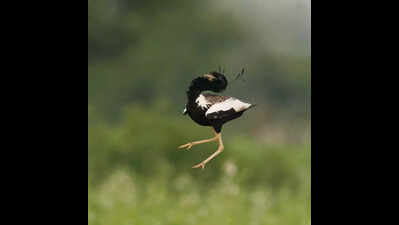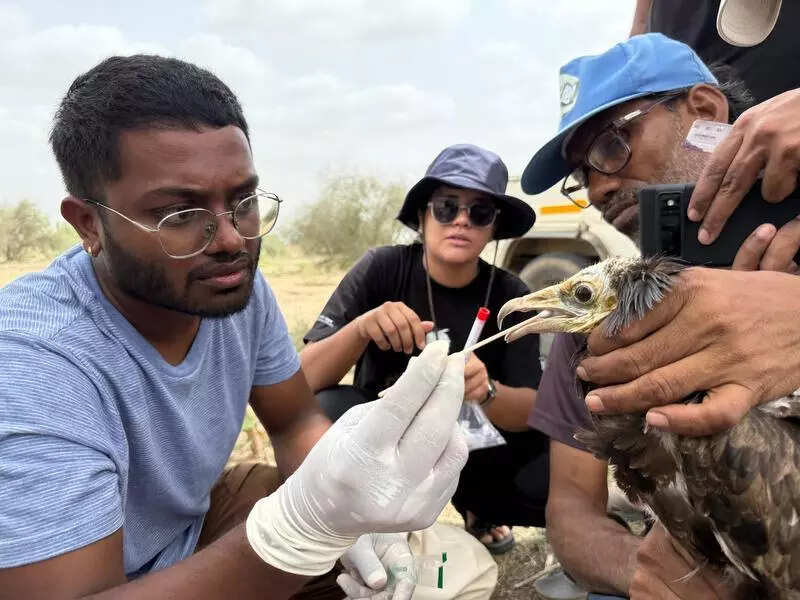Jaipur: Lesser Florican (Sypheotides indicus), once a vibrant emblem of Rajasthan’s monsoon grasslands, has now almost vanished from its core breeding grounds in Ajmer, Kekri and Shahpura. This breeding season, wildlife researchers found only a single male, a steep fall from five in 2024 and 39 in 2020, signalling a catastrophic 97% decline in the wild.A recent landscape survey by the Bombay Natural History Society (BNHS) confirmed the grim numbers. The lone male, belonging to the smallest member of the bustard family and locally called Kharmor, was spotted near Bandanwara. “The situation is alarming. These endemic birds return to Rajasthan every monsoon to breed, usually arriving by late June after crops are sown. This year, only one was recorded,” said BNHS researcher and wildlife scientist Sujit Narwade. In 2023, the forest department declared a 931-hectare conservation reserve in Arwar village, Ajmer, for the Lesser Florican — one of four bustard species in India, all on the IUCN Red List. However, local birdwatcher Balveer Singh said, “No effort has been made to remove Prosopis juliflora or restore grasslands. The area remains unprotected, with free-ranging dogs and heavy grazing continuing.” Endemic to the Indian subcontinent, the Lesser Florican is a birdwatcher’s delight. During the monsoon breeding season, males sport striking plumage and leap up to two metres in the air, producing a frog-like rattle heard 300–400 metres away to court females.Historically, the bird’s breeding and non-breeding habitats were semi-arid grasslands. Today, invasive shrubs have overtaken much of this land, making it unsuitable. Experts warn that Rajasthan still has about 5,000 hectares of pastureland in this region, and timely restoration could benefit conservation.Shrinking grasslands due to agriculture, mining and overgrazing have forced the species to adapt to farmlands, coexisting with local communities. Yet, pesticides have turned these unprotected agropastoral areas into unsafe breeding zones. IUCN member Dau Lal Bohra said , “The proposal to declare certain lands as Biodiversity Sites allowing regulated agriculture while protecting the birds remains stalled,” he said.With this, future of forest department’s conservation breeding programme at Shokaliya, Ajmer, in partnership with the Wildlife Institute of India, also looks bleak as the wild population teeters on the brink. “In two years, 11 eggs have hatched successfully — but with numbers in the wild at rock bottom, the survival of this grassland dancer remains uncertain,” said a forest official.
Lesser Florican faces near extinction in Raj grasslands | Jaipur News





